-
 bitcoin
bitcoin $106975.071866 USD
-0.29% -
 ethereum
ethereum $3871.670850 USD
-0.07% -
 tether
tether $1.000261 USD
-0.01% -
 bnb
bnb $1084.417621 USD
-0.50% -
 xrp
xrp $2.348167 USD
0.82% -
 solana
solana $185.621736 USD
0.45% -
 usd-coin
usd-coin $0.999833 USD
-0.04% -
 tron
tron $0.313423 USD
0.81% -
 dogecoin
dogecoin $0.188856 USD
0.54% -
 cardano
cardano $0.630416 USD
-0.49% -
 hyperliquid
hyperliquid $36.506353 USD
2.24% -
 ethena-usde
ethena-usde $0.999584 USD
-0.01% -
 chainlink
chainlink $16.750026 USD
-0.77% -
 stellar
stellar $0.313373 USD
0.37% -
 bitcoin-cash
bitcoin-cash $465.978560 USD
-1.57%
How does public-key cryptography work in blockchain?
Public-key cryptography secures blockchain transactions by using paired keys: a private key to sign transactions and a public key to verify them, ensuring trustless, tamper-proof exchanges.
Aug 10, 2025 at 05:31 pm
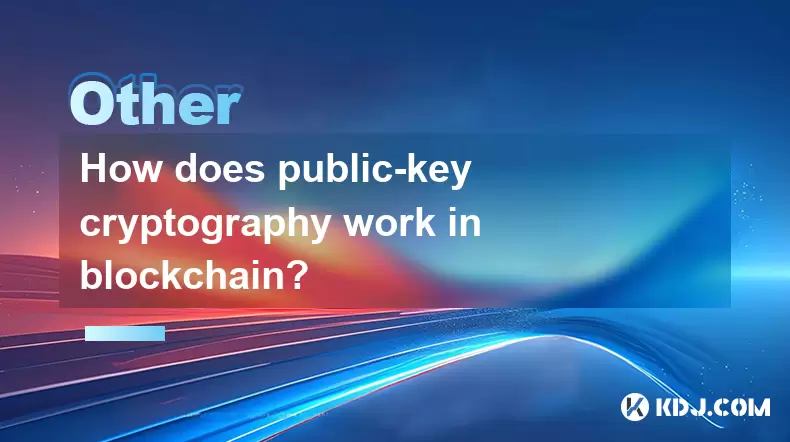
Understanding Public-Key Cryptography in Blockchain
Public-key cryptography, also known as asymmetric cryptography, is a foundational security mechanism in blockchain technology. It enables secure digital identity, transaction authentication, and data integrity without requiring a central authority. In this system, each user has a pair of mathematically linked keys: a public key and a private key. The public key can be shared openly and is used to receive funds or verify signatures, while the private key must remain secret and is used to sign transactions or prove ownership.
The mathematical relationship between the keys ensures that data encrypted with the public key can only be decrypted with the corresponding private key, and vice versa. More importantly for blockchain, a signature generated with the private key can be verified using the public key, confirming that the message originated from the rightful owner without exposing the private key.
Key Generation and Wallet Creation
When a user creates a cryptocurrency wallet, the first step is generating a key pair. This process relies on cryptographic algorithms such as Elliptic Curve Digital Signature Algorithm (ECDSA), commonly used in Bitcoin and Ethereum. The private key is a randomly generated large number, typically 256 bits in length. From this private key, the public key is derived through a one-way mathematical function involving elliptic curve multiplication.
- A cryptographically secure random number generator produces the private key.
- The private key is input into the ECDSA algorithm to compute the public key.
- The public key is then hashed using SHA-256 and RIPEMD-160 to create the wallet address.
- The resulting address is encoded (often in Base58 or Bech32) for human readability.
This one-way derivation ensures that while the public key and address can be generated from the private key, it is computationally infeasible to reverse the process. This protects users even when their public addresses are visible on the blockchain.
Transaction Signing and Verification
When a user initiates a transaction, public-key cryptography ensures authenticity and integrity. The sender uses their private key to create a digital signature for the transaction data. This signature is unique to both the transaction and the private key, meaning even a minor change in the transaction details invalidates the signature.
- The transaction details (sender, receiver, amount, timestamp) are compiled into a message.
- A hash of the message is computed using SHA-256.
- The hash is signed using the sender’s private key via ECDSA, producing the digital signature.
- The signature, along with the transaction data and public key, is broadcast to the network.
Nodes in the blockchain network then verify the signature using the sender’s public key. If the verification passes, the transaction is considered valid and can be included in a block. This process prevents tampering and ensures only the rightful owner can spend their funds.
Address Derivation and Public Transparency
In blockchain, users interact using wallet addresses rather than raw public keys. These addresses are derived from public keys through additional hashing steps to enhance security. For example, in Bitcoin:
- The public key is hashed with SHA-256.
- The result is then hashed with RIPEMD-160 to produce a 160-bit hash.
- Version bytes and checksums are added.
- The final output is encoded using Base58Check or Bech32 for formats like P2PKH or P2WPKH.
This layered hashing protects against potential vulnerabilities, such as quantum computing attacks on public keys, by keeping the full public key hidden until a transaction is spent. Until then, only the address is visible on the blockchain, limiting exposure.
Role in Consensus and Network Security
Public-key cryptography supports the decentralized nature of blockchain by enabling trustless verification. Nodes do not need to know the identity of users; they only need to validate digital signatures. Every full node independently checks:
- Whether the transaction input references unspent outputs.
- Whether the digital signature matches the public key associated with the source address.
- Whether the public key hashes to the expected wallet address.
This system eliminates the need for intermediaries. The immutability of transactions is preserved because altering any part of a signed transaction invalidates the signature. Additionally, replay attacks are mitigated through mechanisms like transaction IDs and nonce usage, which are also verified cryptographically.
Implementation Example: Sending Bitcoin
To illustrate how public-key cryptography works in practice, consider a Bitcoin transaction:
- Alice wants to send 0.5 BTC to Bob.
- Bob shares his Bitcoin address (e.g.,
1A1zP1eP5QGefi2DMPTfTL5SLmv7DivfNa). - Alice constructs a transaction specifying Bob’s address as the output and her previous unspent transaction output (UTXO) as the input.
- She retrieves her private key corresponding to the UTXO’s address.
- Using ECDSA, she signs the transaction hash with her private key.
- The signed transaction, including her public key, is broadcast to the Bitcoin network.
- Miners and nodes verify:
- The signature is valid using Alice’s public key.
- The public key hashes to the address that owns the UTXO.
- The transaction structure is correct and not double-spent.
Once verified, the transaction is included in a block and confirmed on the blockchain.
Frequently Asked Questions
Can a public key be used to derive the private key?No. The cryptographic algorithms used, such as ECDSA, rely on mathematical problems (like the elliptic curve discrete logarithm problem) that are computationally infeasible to reverse. Even with vast computing power, deriving a private key from a public key would take billions of years with current technology.
What happens if I lose my private key?If the private key is lost, access to the associated funds is permanently lost. Blockchain networks do not have recovery mechanisms. The address remains on the ledger, but no one can generate valid signatures to spend the funds. This underscores the importance of secure backup methods like seed phrases.
Is public-key cryptography the same across all blockchains?Most blockchains use ECDSA or similar algorithms (e.g., EdDSA in some newer systems like Solana). While the core principles remain consistent, implementations may vary in key length, hashing methods, or signature schemes. Always verify the cryptographic standards of a specific blockchain.
Can two different private keys produce the same public key?The probability is astronomically low due to the vast key space (2^256 possible private keys). A collision would break the entire security model, but no such instance has ever been observed. Cryptographic systems assume key uniqueness under proper generation practices.
Disclaimer:info@kdj.com
The information provided is not trading advice. kdj.com does not assume any responsibility for any investments made based on the information provided in this article. Cryptocurrencies are highly volatile and it is highly recommended that you invest with caution after thorough research!
If you believe that the content used on this website infringes your copyright, please contact us immediately (info@kdj.com) and we will delete it promptly.
- XRP Price, Ripple, and AlphaPepe: A Tale of Two Crypto Worlds
- 2025-10-19 08:25:15
- Bitcoin Fear Index, Crypto, and the Rebound: What's a New Yorker to Do?
- 2025-10-19 08:25:15
- FET Plunge, Rally, Forecasts: Decoding the AI Crypto's Next Move
- 2025-10-19 09:05:13
- Cardano Analyst's Key Move: $5 ADA by 2026?
- 2025-10-19 08:30:16
- Bitcoin, SUI, and Crypto Presales: Navigating the NYC Crypto Scene
- 2025-10-19 08:45:13
- Meme Coin Presales: Will the Next One Explode?
- 2025-10-19 08:30:16
Related knowledge
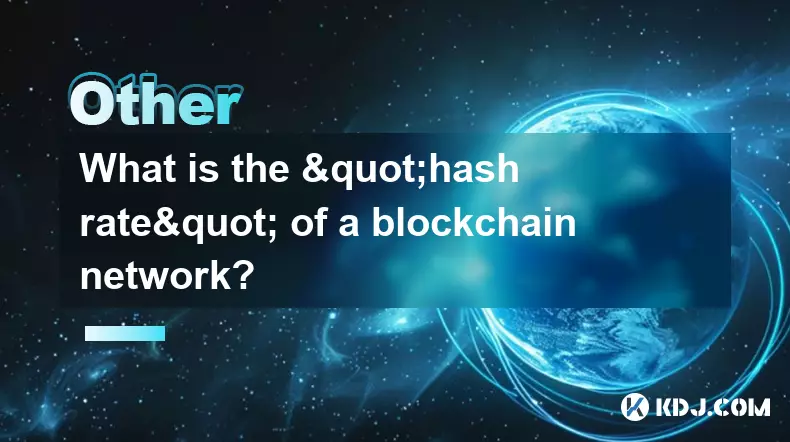
What is the "hash rate" of a blockchain network?
Oct 10,2025 at 03:55pm
Understanding Hash Rate in Blockchain Networks1. The hash rate refers to the total computational power being used to process transactions and mine new...
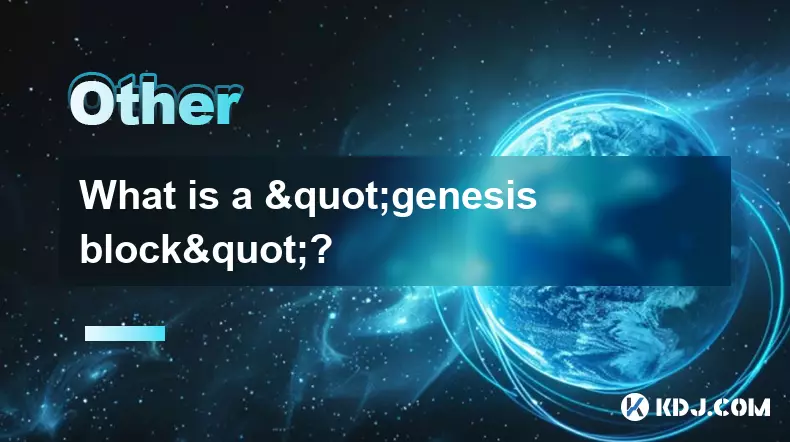
What is a "genesis block"?
Oct 15,2025 at 07:55pm
Understanding the Genesis Block in CryptocurrencyThe genesis block is the very first block in a blockchain network. It serves as the foundation upon w...

Who is Satoshi Nakamoto?
Oct 15,2025 at 01:01pm
Who is Satoshi Nakamoto?1. Satoshi Nakamoto is the pseudonymous individual or group credited with creating Bitcoin, the first decentralized cryptocurr...
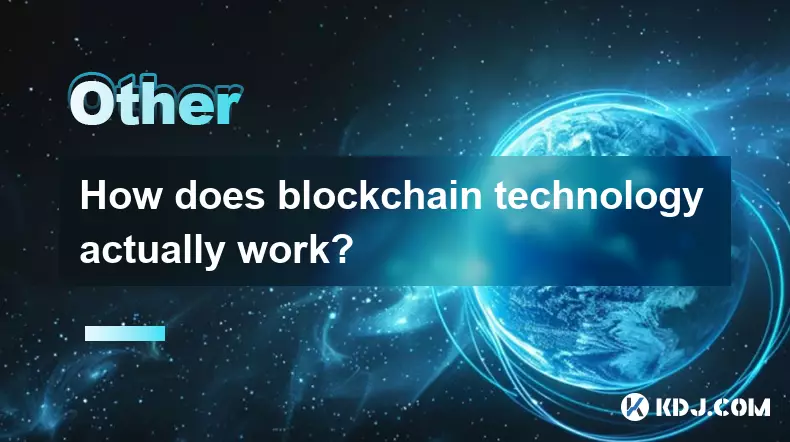
How does blockchain technology actually work?
Oct 11,2025 at 02:36pm
Understanding the Core Mechanism of Blockchain1. At its foundation, blockchain is a decentralized digital ledger that records transactions across mult...

What is a token economy?
Sep 20,2025 at 12:18am
Understanding the Foundations of a Token Economy1. A token economy in the context of cryptocurrency refers to a system where digital tokens are used a...
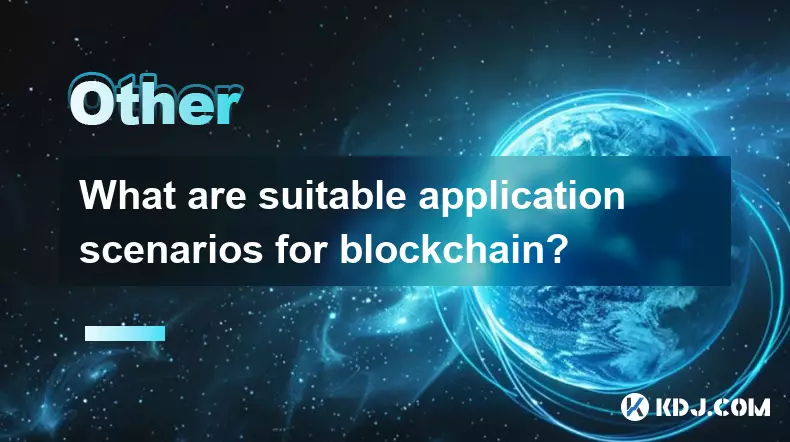
What are suitable application scenarios for blockchain?
Sep 20,2025 at 03:19am
Decentralized Finance (DeFi) Platforms1. Blockchain enables the creation of financial services without centralized intermediaries, allowing users to l...

What is the "hash rate" of a blockchain network?
Oct 10,2025 at 03:55pm
Understanding Hash Rate in Blockchain Networks1. The hash rate refers to the total computational power being used to process transactions and mine new...

What is a "genesis block"?
Oct 15,2025 at 07:55pm
Understanding the Genesis Block in CryptocurrencyThe genesis block is the very first block in a blockchain network. It serves as the foundation upon w...

Who is Satoshi Nakamoto?
Oct 15,2025 at 01:01pm
Who is Satoshi Nakamoto?1. Satoshi Nakamoto is the pseudonymous individual or group credited with creating Bitcoin, the first decentralized cryptocurr...

How does blockchain technology actually work?
Oct 11,2025 at 02:36pm
Understanding the Core Mechanism of Blockchain1. At its foundation, blockchain is a decentralized digital ledger that records transactions across mult...

What is a token economy?
Sep 20,2025 at 12:18am
Understanding the Foundations of a Token Economy1. A token economy in the context of cryptocurrency refers to a system where digital tokens are used a...

What are suitable application scenarios for blockchain?
Sep 20,2025 at 03:19am
Decentralized Finance (DeFi) Platforms1. Blockchain enables the creation of financial services without centralized intermediaries, allowing users to l...
See all articles





















![[4K 60fps] Astral by oc3andark (1 Coin) [4K 60fps] Astral by oc3andark (1 Coin)](/uploads/2025/10/19/cryptocurrencies-news/videos/k-fps-astral-ocandark-coin/68f438453fa33_image_500_375.webp)




















































